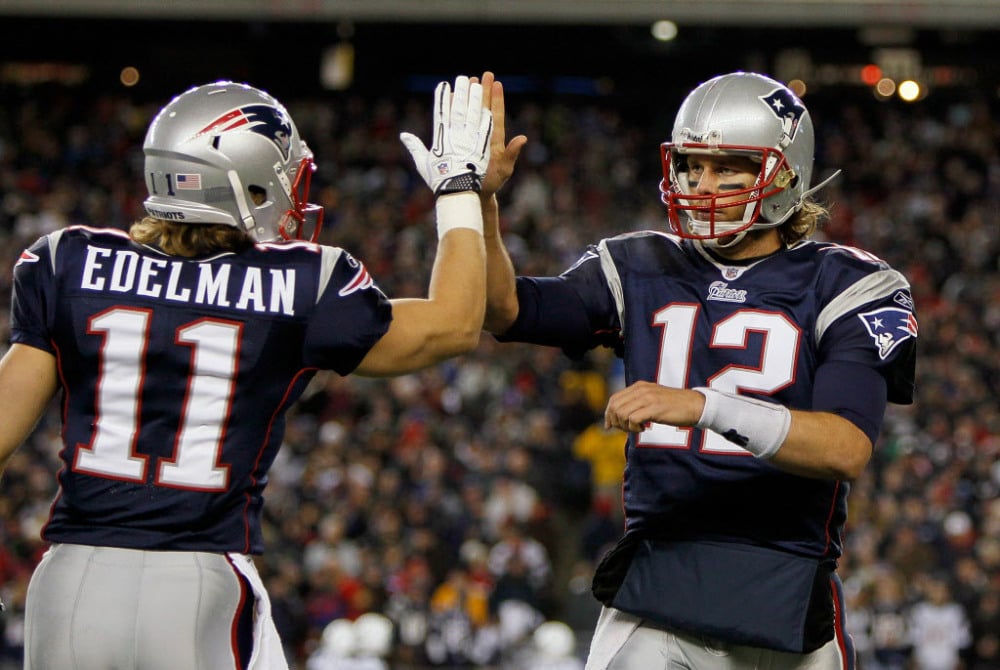I looked at running back ACL tears since 1999 to see how backs have responded in the year after tearing their knee. The numbers show the average stats for the running backs in the year before and the year after the ACL tear.

As expected, touchdowns decrease substantially. But take a look at YPC. The gap appears small, but it’s actually 4.51 YPC before the injury and 4.17 YPC after it—the difference between a Pro Bowl-caliber running back and one slightly worse than league-average. YPC wouldn’t be affected (much) by total games played, so that’s a meaningful result.
What we really want to know, though, is whether or not a post-ACL running back is playable in fantasy leagues when he returns to the field, whenever that might be. The most effective way to gauge that is of course total fantasy points per game.

Take a look at the percentage drop in running back stats post-ACL.

The fantasy points category is again on a per-game basis, and the drop of just under 30 percent is very significant. Since 1999, running backs coming off ACL surgery have produced right around two-thirds of the fantasy points on a per-game basis as compared to their pre-ACL selves. That’s a serious drop.
Recent Success
There’s a general sentiment that running backs coming off knee tears have been able to return faster and more effectively in recent seasons, due to a combination of superior surgeries and rehab. I think there’s probably some merit to that idea. In the past few seasons, we’ve seen Adrian Peterson, Jamaal Charles, and Knowshon Moreno put up top-tier numbers after ACL surgery.
However, we also need to note that there are some unique circumstances surrounding the backs who have rebounded from knee tears in the recent past. In regards to AP, he’s just a freak who almost shouldn’t even be analyzed alongside other players. He responded from an ACL tear in a way that we’ve never witnessed and he’s so ridiculously talented that we’re probably justified in separating the running backs into “human” and “Peterson” categories.
Charles also seemed to defy the odds in 2012, but despite his big numbers, he still regressed from the year prior to the 2011 knee tear; his total yards, touchdowns, and YPC all declined. Still, he produced at a Pro Bowl-caliber level, so we can’t really knock him.
The third example—Moreno—didn’t actually rebound in the year directly following his ACL tear. In Year N+1, he averaged 3.8 YPC and was pretty awful in Denver. He broke out in Year N+2 (2013), but I’d argue that had far more to do with Peyton Manning than Moreno’s ability.
Despite a few success stories, there are also plenty of examples of running backs regressing in a big way following ACL tears: Rashard Mendenhall, Kevin Smith, Ronnie Brown, Deuce McAllister, Edgerrin James, Terrell Davis, Jamal Anderson.
So maybe the rule-of-thumb here is that running backs who aren’t once-in-a-generation sort of talents like AP or Charles are probably going to regress significantly following a serious knee surgery. Part of that might be due to the knee itself, and part could be due to changes in usage. It seems like coaches might be a little timid to throw post-ACL running backs into the fire right away, and when they do see the field, it’s often in a timeshare situation.
When you combine a reduced workload with evidence of reduced efficiency, you get reduced fantasy production, which is my second-least favorite type of reduction. My least favorite is a red wine reduction. I’ve just never been able to get into it.
Data provided by Ian Hartitz





